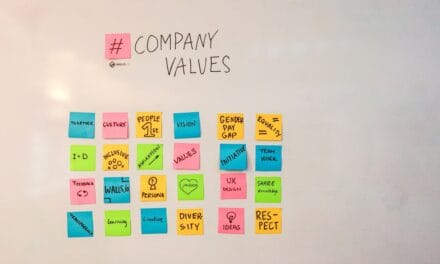In today's fast-paced digital world, the importance of continuous personal and professional development in tech has never been more critical. Did you know that according to LinkedIn’s Workforce Learning report, 94% of employees stated that they would stay at a company longer if it invested in their career development? As technology evolves at an unprecedented rate, it is essential for professionals in the tech industry to not only keep up but to actively engage in ongoing learning and skill enhancement. This commitment to growth not only helps individuals maintain their relevance but also empowers organizations to thrive in a competitive landscape. In this blog post, we will explore the multifaceted benefits of continuous development in tech, strategies for personal growth, and the future trends shaping the learning landscape.
The Rapid Evolution of Technology
The technology landscape is in a constant state of flux, driven by rapid advancements and innovation. This ongoing evolution underscores the importance of continuous personal and professional development in tech. As new technologies emerge, professionals must stay current to remain relevant and competitive in their fields.
Trends Shaping the Tech Industry
Several trends impact the tech industry, making continuous development crucial for success:
Artificial Intelligence and Machine Learning: These technologies are transforming operations and decision-making across sectors.
Cloud Computing: With businesses increasingly relying on cloud services, knowledge of these platforms is essential.
Cybersecurity: As threats become more sophisticated, understanding security protocols is vital for any tech professional.
Remote Work Technologies: Adapting to virtual collaboration tools has become necessary for team dynamics.
Skills Gap: Why Continuous Development is Essential
The skills gap poses a significant challenge in the tech sector. Many professionals find themselves lacking the latest skills required for new roles or advancements. This gap highlights:
The need for ongoing education and training.
The necessity for tech leaders to implement strategies that promote upskilling among their teams.
An increased emphasis on adaptability, with rapid shifts in responsibilities and required skill sets.
By investing in continuous personal and professional development, tech professionals not only enhance their individual capabilities but also contribute to their organization's overall success.
For those interested in exploring online learning resources, platforms like Coursera offer a variety of courses tailored to the evolving tech landscape.
In summary, recognizing and addressing the critical need for continuous development is fundamental for anyone aiming to thrive in the dynamic world of technology.
Benefits of Continuous Personal and Professional Development
Embracing the importance of continuous personal and professional development in tech has numerous benefits that can significantly impact both individuals and organizations. Here are some key advantages:
Enhanced Skill Sets
One of the most direct benefits of continuous development is the enhancement of individual skill sets. Professionals who actively seek to learn and grow are better equipped to:
Master new technologies and tools relevant to their roles.
Increase their problem-solving and critical thinking abilities.
Adapt to changing industry standards and practices.
Increased Adaptability
In a field characterized by rapid change, adaptability is crucial. Continuous personal and professional development enables tech professionals to:
Adjust to new responsibilities and expectations in their roles.
Learn to pivot strategies when dealing with unforeseen challenges, such as global events or technological disruptions.
Stay ahead of competitors who may not prioritize ongoing training and development.
Improved Job Satisfaction
Investing in development leads to greater job satisfaction and engagement among employees. This can result in:
Higher retention rates, as employees feel valued and motivated.
A more dynamic workplace culture that fosters innovation and collaboration.
Increased enthusiasm for tasks and projects, leading to better overall performance.
By recognizing and acting on the importance of continuous personal and professional development in tech, companies can cultivate a skilled workforce that is adaptable, satisfied, and ready to tackle future challenges.
For further reading on employee growth strategies, check out resources on LinkedIn Learning, which offers a plethora of courses tailored to professionals in the tech industry.
Strategies for Continuous Development in Tech
To effectively harness the importance of continuous personal and professional development in tech, professionals and organizations alike need to adopt specific strategies. These methods not only facilitate learning but also encourage a culture of growth and improvement. Here are some effective strategies:
Online Courses and Certifications
In today's digital age, online learning platforms provide a wealth of resources for technologists looking to enhance their skills. Benefits include:
Flexibility to learn at your own pace and schedule.
Access to a variety of subjects, from programming languages to data analysis.
Opportunities to earn recognized certifications that can bolster career advancement.
Networking and Community Engagement
Connecting with peers is vital for professional growth. Engaging with tech communities can offer:
Insights into industry trends and emerging technologies.
Opportunities to collaborate on projects, providing real-world experience.
Support and motivation through shared experiences and knowledge.
Mentorship and Coaching
Seeking mentorship or coaching can significantly accelerate personal and professional development. Key advantages include:
Personalized guidance tailored to your career goals and challenges.
The ability to gain insights from experienced professionals who have navigated similar paths.
A sounding board for ideas and strategies, allowing for deeper reflection and improvement.
By implementing these strategies, tech professionals can effectively embrace the importance of continuous personal and professional development. This commitment not only enhances individual capabilities but also contributes to overall organizational performance.
For a comprehensive guide on online learning resources, consider exploring edX, which offers a range of courses from top universities and institutions.
Overcoming Barriers to Continuous Development
While the importance of continuous personal and professional development in tech is well recognized, many professionals face barriers that hinder their growth. Understanding these obstacles and finding ways to overcome them is essential for fostering a culture of learning. Here are some common challenges and strategies to navigate them:
Time Management Challenges
One of the most significant barriers to continuous development is the lack of time. Busy schedules can make it difficult to prioritize learning. To combat this:
Set specific learning goals and allocate dedicated time slots weekly for professional development.
Break down large topics into smaller, manageable pieces that can be tackled over time.
Use time management tools, such as calendars or task trackers, to organize learning activities alongside work responsibilities.
Lack of Access to Resources
Access to quality learning materials can vary, making it difficult for some professionals to invest in their development. To address this issue:
Seek out free or low-cost online resources, such as webinars, tutorials, and industry blogs.
Participate in local tech meetups or conferences, which can provide networking opportunities and knowledge sharing platforms.
Leverage organizational resources, such as training programs or learning stipends, that may be available to employees.
Addressing Mindset Limitations
Mindset plays a crucial role in the pursuit of continuous development. A growth mindset encourages resilience and persistence. To foster this:
Challenge negative self-talk and replace it with positive affirmations about your abilities and potential.
Embrace failures as learning opportunities rather than setbacks.
Surround yourself with supportive colleagues and mentors who encourage growth and development.
By actively addressing these barriers, tech professionals can recognize and appreciate the importance of continuous personal and professional development, ensuring that they remain competitive and fulfilled in their careers.
For additional time management strategies, consider checking out resources from Todoist, a popular task management tool that helps users organize their time effectively.
Creating a Culture of Continuous Learning
To fully embrace the importance of continuous personal and professional development in tech, organizations must cultivate a culture that encourages and supports ongoing learning. This culture not only benefits individual employees but also drives overall organizational success. Here are key components to foster such an environment:
Importance of Leadership Support
Leadership plays a critical role in promoting a learning culture. Leaders can:
Set the tone by prioritizing their own development and sharing their learning experiences.
Allocate resources, such as training budgets or time off for learning, to demonstrate commitment to continuous development.
Encourage open communication about individual learning goals and create opportunities for sharing knowledge.
Encouraging Knowledge Sharing among Teams
A collaborative environment helps to facilitate learning across teams. Organizations can boost knowledge sharing by:
Implementing regular team meetings or workshops where members can share new insights or best practices.
Creating collaborative platforms, like internal forums or chat groups, where employees can discuss challenges and solutions.
Recognizing and rewarding employees who actively engage in mentoring or coaching others.
Implementing Development Plans
Structured development plans can guide individuals on their learning journeys. Effective development planning includes:
Setting clear, achievable goals aligned with both personal aspirations and organizational objectives.
Conducting regular reviews to assess progress and modify plans as necessary.
Offering a variety of development opportunities, such as workshops, online courses, and access to industry conferences.
By prioritizing these elements, organizations can create a vibrant learning culture that underscores the importance of continuous personal and professional development in tech, ultimately leading to increased innovation and competitiveness.
For further exploration of building a learning culture, consider visiting Harvard Business Review, which offers in-depth articles and insights on organizational development.
The Future of Development in Tech
As technology continues to evolve, so too does the necessity for continuous personal and professional development in tech. Looking ahead, several trends and predictions indicate how development practices will shape the future landscape of the industry. Here are some key considerations:
Predictions for Continuous Learning
Increased Use of Artificial Intelligence in Learning
AI technologies are set to personalize the learning experience, offering tailored content based on individual skill levels and learning styles. This is expected to:Enhance engagement through adaptive learning paths.
Improve retention rates as materials align more closely with user needs.
Emphasis on Soft Skills Development
Alongside technical skills, there will be a growing recognition of the need for soft skills, such as communication, teamwork, and leadership. This shift reflects:Employers' desire for well-rounded professionals capable of navigating complex organizational dynamics.
The importance of emotional intelligence in collaborative tech environments.
Integration of Microlearning
Microlearning, or bite-sized learning modules, is likely to gain traction as professionals seek quick and efficient ways to acquire new skills. Benefits of this approach include:Flexibility to learn on-the-go, fitting into busy schedules.
Enhanced focus on specific skills without overwhelming content.
The Role of Emerging Technologies in Learning
Emerging technologies will also reshape how continuous development occurs within tech. Expect to see:
Virtual Reality (VR) and Augmented Reality (AR): Offering immersive learning experiences that can simulate real-world scenarios.
Blockchain Technology: Providing secure platforms for credentialing and verifying skills and educational achievements.
Social Learning Platforms: Encouraging collaborative learning through shared experiences and interactions among peers.
By fostering an awareness of these trends, tech professionals and organizations can better appreciate the importance of continuous personal and professional development in tech and proactively prepare for the changes ahead.
For those interested in exploring how technology influences learning, check out the resources available at Microsoft, where education technology initiatives are evolving to meet future demands.
Conclusion
In the fast-paced world of technology, recognizing the importance of continuous personal and professional development in tech is crucial for both individuals and organizations. As technology evolves and new challenges arise, ongoing learning is no longer optional; it is essential for growth, adaptability, and sustained success. To summarize the key points:
Staying Relevant: Continuous development helps professionals keep up with rapid technological advancements and shifts in industry standards, ensuring they remain valuable assets to their organizations.
Enhancing Skills: Ongoing learning not only improves technical skills but also fosters essential soft skills, contributing to well-rounded professionals who can excel in collaborative environments.
Cultivating Innovation: A culture of continuous learning promotes creativity and innovation, as individuals feel empowered to explore new ideas without the fear of failure.
Supporting Employee Satisfaction: Organizations that prioritize continuous development cultivate a more engaged and satisfied workforce. This leads to higher retention rates and a positive workplace culture.
Preparing for Future Trends: Embracing the latest developments, such as AI and microlearning, positions both professionals and organizations to better adapt to the future landscape of the tech industry.
By prioritizing continuous personal and professional development, tech professionals can not only enhance their careers but also drive the success of their teams and organizations. The future belongs to those who are willing to invest in their growth today.
For further insights on fostering growth and development in your career, explore resources available at IBM's Skills Gateway, which offers innovative learning opportunities tailored to the evolving needs of the tech industry.
Call to Action: Embrace Development Today
As we have explored throughout this article, the importance of continuous personal and professional development in tech cannot be overstated. To stay competitive and thrive in this ever-evolving landscape, it is essential for professionals and organizations to take proactive steps towards enhancing their skills and knowledge. Here’s how you can get started:
Assess Your Current Skills
Take time to evaluate your existing skills and identify areas for improvement. Consider:What skills are in demand in your industry?
Which areas excite you the most?
What gaps exist between your current skills and your career aspirations?
Set SMART Goals
Establish Specific, Measurable, Achievable, Relevant, and Time-bound goals for your development journey. Examples include:Completing an online course within three months.
Attending a tech conference within the next year to network and learn from industry leaders.
Participating in a mentorship program to gain insights from experienced professionals.
Take Advantage of Online Learning Platforms
Explore the wealth of resources available online. Platforms like Pluralsight and Udacity offer courses tailored to the latest tech skills needed in the industry.Engage with Professional Networks
Join industry-specific groups on platforms like LinkedIn or Facebook. These communities can provide support, resources, and opportunities for collaboration.Make Continuous Learning a Habit
Incorporate learning into your daily routine. Whether through podcasts, webinars, or reading articles, finding small ways to learn every day can lead to significant growth over time.
By actively commit to continuous personal and professional development, you can ensure that you remain relevant, adaptable, and fulfilled in your career. Start today, and watch how your investment in growth pays off for your future success.
What is continuous personal and professional development in tech?
Continuous personal and professional development in tech refers to the ongoing process of acquiring new skills, knowledge, and experiences that are relevant to one's career in the technology sector. This can involve taking courses, attending workshops, networking with peers, and engaging in self-directed learning to stay current with industry trends and technologies.
Why is continuous development important for tech professionals?
Continuous development is essential for tech professionals to remain competitive in a fast-evolving landscape. As new technologies and methodologies emerge, ongoing learning helps individuals adapt to changes, enhance their skill sets, and increase their overall employability, ensuring they can meet the demands of their roles.
How can I start my continuous development journey in tech?
To begin your continuous development journey, assess your current skills and identify areas for improvement. Set specific learning goals, explore online courses or local workshops, and engage with professional networks. Incorporate learning into your daily routine by dedicating time each week to expand your knowledge and skills.
What are some effective strategies for continuous development in tech?
Effective strategies for continuous development in tech include enrolling in online courses, participating in hackathons, seeking mentorship opportunities, joining professional associations, and attending industry conferences. Regularly participating in these activities fosters a culture of learning and allows for networking and collaboration with other professionals.
How can organizations support the continuous development of their employees?
Organizations can support the continuous development of their employees by providing access to training resources, encouraging a culture of learning, offering mentorship programs, and allocating time for employees to pursue personal development goals. By investing in their workforce, companies can enhance employee satisfaction and retention, ultimately driving better organizational outcomes.





